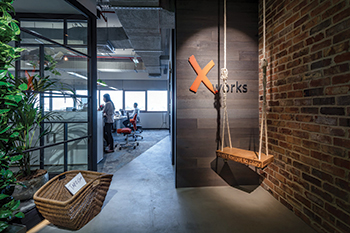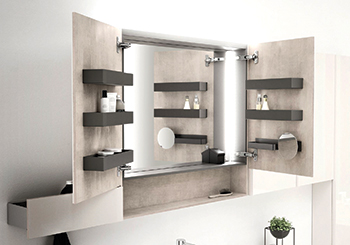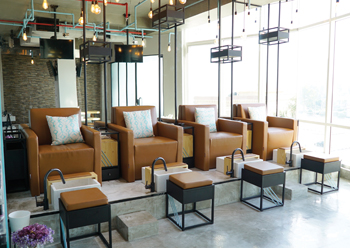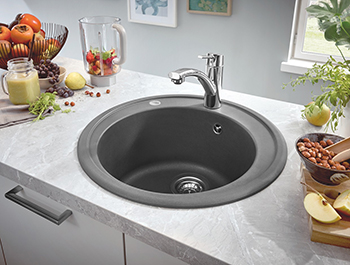
 Geberit’s Acanto helps create an uncluttered finish.
Geberit’s Acanto helps create an uncluttered finish.
While comfort in bathrooms is usually associated with luxuries, there is another level of user comfort that must be factored into the room’s design and layout: efficiently planned storage space, says Geberit.
When we think of comfort in the bathroom, it’s usual to conjure up images of whirlpool baths and walk-in showers, says Gabriel Nassar, managing director of Geberit’s Rep office Gulf.
“While such luxuries no doubt make the bathroom a pleasant place to be, there is another level of comfort that needs to be factored into the room’s design and layout – namely the customer-specific need for storage space and individuality.”
He says all bathrooms, regardless of their size, need good storage to keep them free of clutter and create a calm, relaxed environment. This requires planning the space in such a way that all the items in the bathroom are stored in the most suitable place, thus maximising user comfort.
 |
|
Storage space needs careful planning. |
The first task, Nassar says, is to identify what items need to be stored in the bathroom and how often they are needed. After that, it’s all down to ergonomics and ensuring that these items are stored in the most appropriate place.
Research by Geberit into storage needs shows that a family of two adults and two children stores up to 10 towels, two cleaning agents, 24 personal hygiene products, 42 cosmetics and 12 rolls of toilet paper in the bathroom. That’s a total of 90 products, all of which need to have their place within a space that often won’t be much bigger than a king-size bed.
Of these, 90 per cent of the personal hygiene products and 50 per cent of the cosmetics are used daily, with items such as extra toilet paper, clean towels and cleaning products needed once every few days or weekly. These are the details that really help decide on the most appropriate storage methods and what should be stored where in the bathroom.
“Ideally, items that are used daily, such as toothpaste, should be stored within optimum reach of around 0.28 sq m, which corresponds to an adult’s average arm length. Products that are used less frequently, such as clean towels and extra toilet paper, can then be stored outside of this optimum reach zone, but should still be stored within a radius of around 0.37 sq m,” says Nassar.
“This may all seem a little scientific, but doing a little maths around the subject really helps maximise on the storage potential in your bathroom. Once you have identified which products you use daily, you will know what size and shape of storage is required for them,” he adds.
Having the right-sized storage space means an end to bottles lying sideways because they are too tall for the space in the bathroom cabinet, or smaller items getting lost in drawers that are far too big.
He points out that Geberit’s Acanto bathroom series – amongst other aspects – offers as much flexibility as users require, allowing them to optimise the bathroom space and create an uncluttered finish where they can relax because everything has its place.
Headquartered in Rapperswil-Jona, Switzerland, Geberit Group is a globally operating company and a European leader in the field of sanitary products. It operates with a strong local presence in most European countries, providing unique added value when it comes to sanitary technology and bathroom ceramics.
Geberit’s production network encompasses 29 production facilities, of which six are located overseas.
With around 12,000 employees in around 50 countries, Geberit generated sales of CHF3.1 billion ($3.1 billion) in 2018.





















_0001.jpg)


.jpg)
















.jpg)








.jpg)







